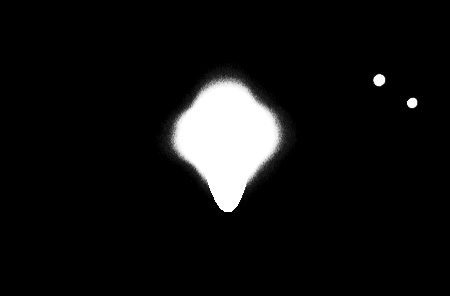If you want to know where you are on Earth, you use a GPS, you use other terrestrial landmarks to help determine your location, or you use some well-known objects in the sky.
This will get you latitude easily, but how about longitude? While there are some tricky things you can do to help yourself out, one of the most commonly used techniques for centuries -- surprisingly -- was using the moons of another world: Jupiter!
 Image credit: Robert J. Modic, over a mere 10-minute timespan! Image was processed down from 3.2 MB to a mere 274 kb by Cleon Teunissen.
Image credit: Robert J. Modic, over a mere 10-minute timespan! Image was processed down from 3.2 MB to a mere 274 kb by Cleon Teunissen.
Come check out this unusual and fun use of Jupiter's moons, courtesy of Brian Koberlein, over at Medium!
More like this
"Nothing in the universe can travel at the speed of light, they say, forgetful of the shadow's speed." -Howard Nemerov


Is Jupiter distant enough that parallax is not an issue?
@Patrick Dennis #1: Parallax? I guess you mean effective parallax for observers on opposite sides of the Earth; clearly single-observer parallax is infinitesimal. At opposition, Jupiter is a minimum of 4 AU (6e+8 km) from Earth, which is where any parallax would be maximized. Using a baseline of 12,800 km, the parallax is 0.213 mrad or 0.73 arcminutes. At opposition, Jupiter's angular diameter is 50 arcseconds, or 0.83 arcminutes, comparable to the parallax.
What is more significant is the speed of light! The difference in distance to Jupiter between opposition (4 AU) and conjunction (12 AU) is 1.2e+9 km. That corresponds to a light travel-time of about 4000 seconds, or more than an hour! If you used ephmerides derived at opposition, you could (near conjunction) be off by an hour in your calculation of time, or as much as 1000 km in distance!
In fact, it was this effect which led to the first observation of the finite speed of light in 1676, by Romer. Huygens combined the time delay with an estimate of Earth's orbit to derive a speed of 220,000 km/s (somewhat less than the currently accepted value).
Why *completely* useless at sea?
On board ship would be a difficult environment for making the observations, but is there something more fundamental than that?
@Robert H. Olley #3: "Difficult" is a wonderfully absurd understatement :-) A ship (especially the relatively small, wooden ships of the 19th and previous centuries) is constantly moving, rocking due to the action of waves and wind against it.
When you look through a telescope, your field of view is of order a few degrees or less. If your ship is rocking even a bit, that rocking will be larger than just a few degrees.
Consequently, whatever you're trying to look at (and make careful timing measurements!) will be constantly moving into and out of the circle of your telescope's view.
Since the rocking is unpredictable, it makes observation functionally impossible.
Taking sextant readings of the sun could be quite damaging on the eyes. Most navigators in earlier centuries had one "good" eye to get around in everyday life, and one "bad" eye which they used to take readings on the sun. That's why the cartoon character "Bluto" always referred to "Popeye" as that "one eyed runt." Presumably one eye was damaged due to taking sextant sightings of the sun.